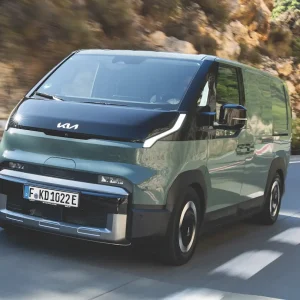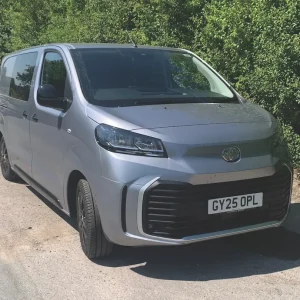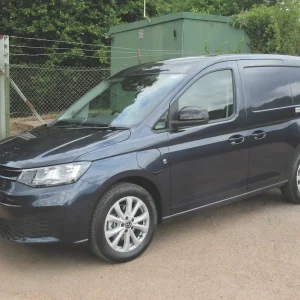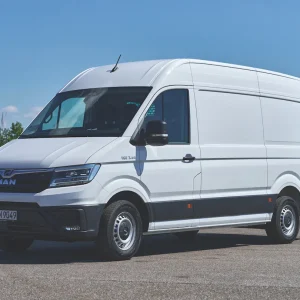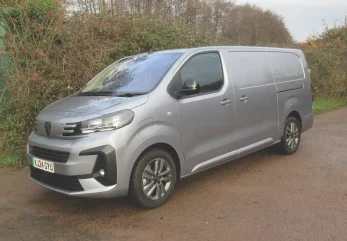
If you own four different van brands and you want to share the same platforms between them to keep down costs, then how on earth do you differentiate one brand from another other than by their badges? It’s by no means a new problem for the motor industry and it is one Citroen, Peugeot, Vauxhall and Fiat Professional owner Stellantis has been busy addressing.
Last year it rolled out a revamp of its entire light commercial range, and in doing so spotlit what it said were key differences in the approaches taken by the four marques.
With Vauxhall, much of the talk is about its Matrix headlights made up of a multiplicity of LEDs along with the development of hydrogen fuel cell versions of the Movano. With Citroen, the stress is on ultra-comfy seats with high-density foam. With Fiat Professional, the emphasis is on comprehensive in-cab storage solutions, while Peugeot is underlining what it says are the benefits of its sophisticated i-Cockpit.
It was with these thoughts in mind that we got to grips with the Long version of the battery-powered Peugeot e-Expert. Each brand has a line-up of electric models and the e-Expert’s equivalents are Citroen’s e-Dispatch, Vauxhall’s Vivaro Electric and Fiat Professional’s e-Scudo.
The Long e-Expert comes with a 6.1m3 cargo area compared with the 5.3m3 on offer from its Standard stable-mate. Both vans share the same wheelbase, but the overall length of the former is 350mm greater than that of the latter.
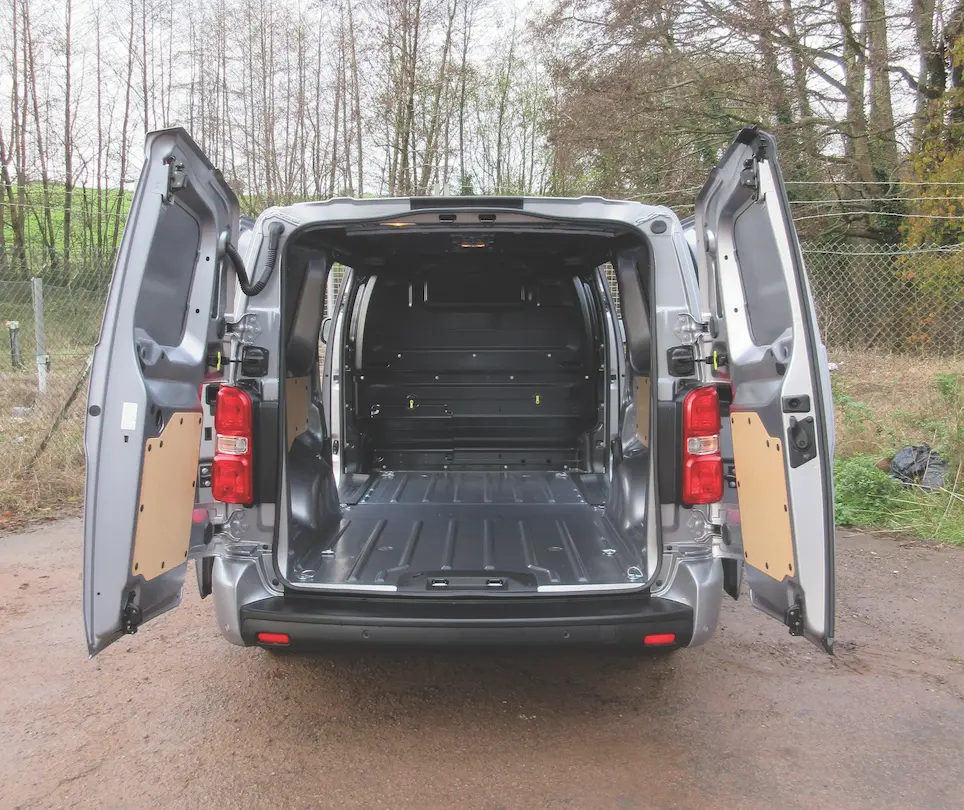
The vehicle’s 100kW electric motor is powered by a 75kWh lithium-ion battery. The battery is covered by an eight-year/100,000-mile warranty which kicks in once it falls below 70% of its charging capacity when new.
The claimed combined WLTP range between recharges is up to 230 miles and we found we were getting very close to that figure, despite cold weather and with some weight in the back. Claimed battery charging times extend from 11 hours and 20 minutes if you are going from zero to 100% using a 7.4kW wall-box to 45 minutes if you are going from 5% to 80% using a 100kW DC rapid charger.
Still several thousand pounds more expensive than the equivalent diesel model, our test van was in Asphalt trim. That places it mid-way between entry-level Professional and top-of-the-range Sport, although Sport trim is only offered on Standard models. Maximum gross payload is a smidgeon over a tonne in all cases; not bad at all in a van of this size given the burden imposed by the battery pack.
Interior and loading
Air-conditioning is standard across the range. Choose Asphalt, however, and you get a number of extras not found on Professional models.
They include TomTom satellite navigation for the i-Connect infotainment system, an ultrasonic alarm, a digital rear-view mirror, front as well as rear parking sensors, along with sensors that cover the van’s blind spot and a highly-effective reversing camera with a bird’s-eye view of the vehicle’s surroundings.
Net result? A van that is easy to manoeuvre in busy urban areas.
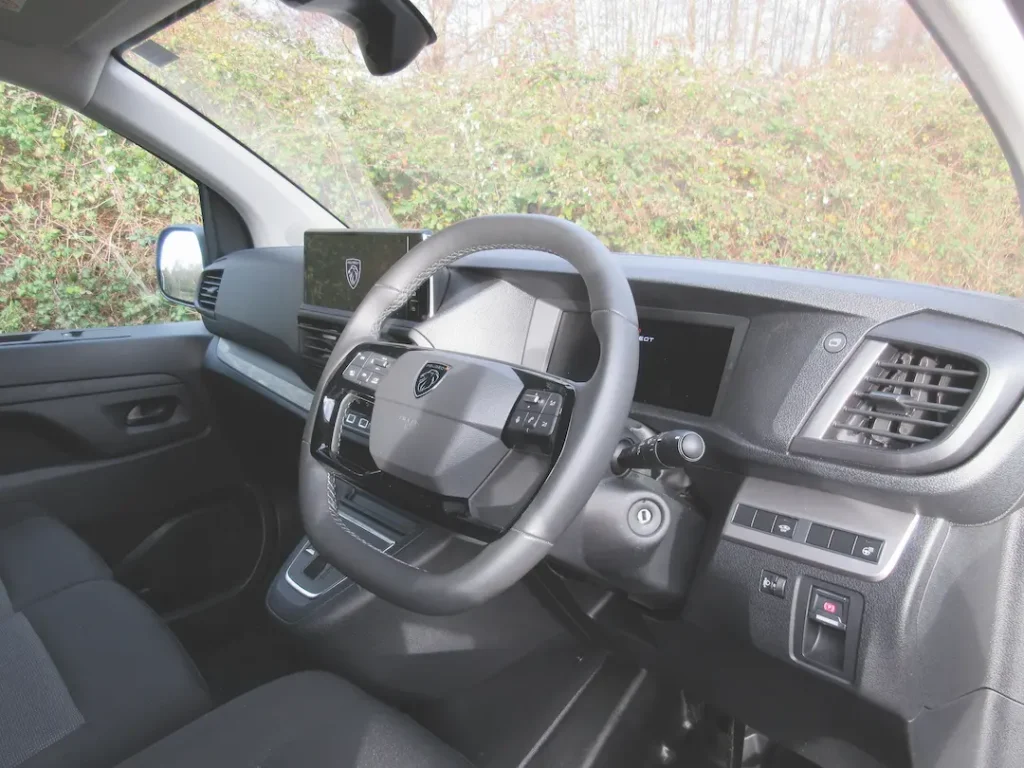
All e-Experts come with 10in touchscreens, 10in digital instrument panels and air-conditioning. You get a three-seater cab, but with restricted space for the middle passenger.
Access to the load area is by means of a sliding door on each side and twin rear doors. Eight cargo tie-down points are provided, while a full-height steel bulkhead protects the cab’s occupants should an insecure load shift forwards.
A hatch (standard with Professional spec) in the bulkhead allows extra-long items to be slid forwards under the seat closest to the passenger door – the seat folds up – and into the footwell, giving you an ever-so-handy additional 1,162mm to play with.
Performance and drive
You use a conventional ignition key to get started even though an electric vehicle doesn’t have an ignition system, which seems odd. Once you have released the electronic parking brake the on-the-road performance will depend on which drive mode you have selected.
Power mode delivers rocket-like acceleration but is a potential licence-loser, and should be deployed with caution. Switch to parsimonious Eco and your range will be extended and performance won’t be affected too severely if you are lightly-laden, but the cab heater’s output will be reduced – not good news in chilly weather.
Conclusion? Normal should be adequate for most purposes. Paddles on each side of the steering column increase and decrease the level of regeneration, capturing kinetic energy that would otherwise be lost when you slow down and pumping it into the battery to boost the range.
Out on the highway we had no quarrels with the handling, although the ride could be better damped. An excess of bumping and thumping from the tyres and suspension was the main source of noise in what was otherwise a commendably-quiet cabin.
Turning to the i-Connect infotainment package, while we’re impressed by its sophistication and the benefits it can deliver – we like the ‘OK Peugeot’ intelligent voice assistant – it is complicated to use and may leave some drivers baffled for quite a while. If it takes you ages to figure out how to tune the DAB radio, then we cannot help but conclude that it needs a rethink.
While we might be accused (perhaps fairly) of being technological Luddites, our response would be that the equivalent systems fitted to Ford light commercials are far easier to get to grips with if you are a van driver in a hurry to depart. And have you ever met a van driver who wasn’t?
Options fitted to our van included 17in alloy wheels (£650), metallic paint (£650), an 11kW onboard charger with a 22kW cable (£400) and Driver Assist Pack (£950). The last-named includes Stop & Go, which adapts your speed to the speed of the vehicle in front and will bring you to a halt if necessary.
| Model | Peugeot e-Expert Long Asphalt van |
| Price (ex VAT and PIVG) | £44,685 |
| Price range (ex VAT and PIVG) | £42,210-£54,545 |
| Insurance group | 34A |
| Warranty | 3yrs/100,000 miles (battery 8yrs/100,000 miles) |
| Service intervals | 2yrs/25,000 miles |
| Load length | 2,862mm |
| Load width (min/max) | 1,258mm/1,636mm |
| Load bay height | 1,397mm |
| Gross payload | 1,001kg |
| Load volume | 6.1m3 |
| Engine size/power | 100kW motor with 75kWh battery |
| Range (WLTP) | 230 miles |
| CO2 | 0g/km |
| On sale | 2024 |
| Key rival | Ford E-Transit Custom |
| Verdict | In many respects a practical choice, but the i-Connect infotainment package needs a bit of a rethink to make it easier to use. |
| Score | 8/10 |

